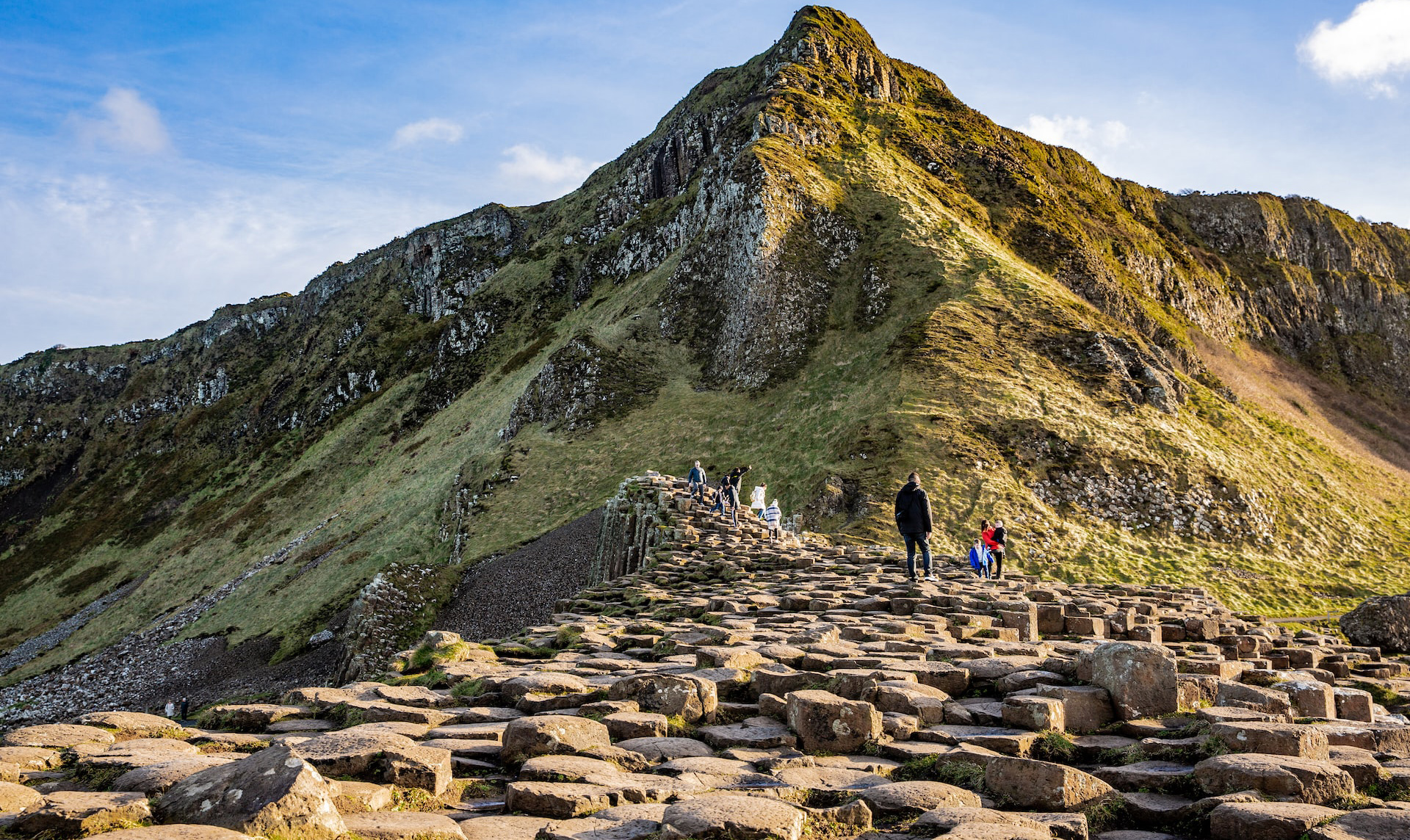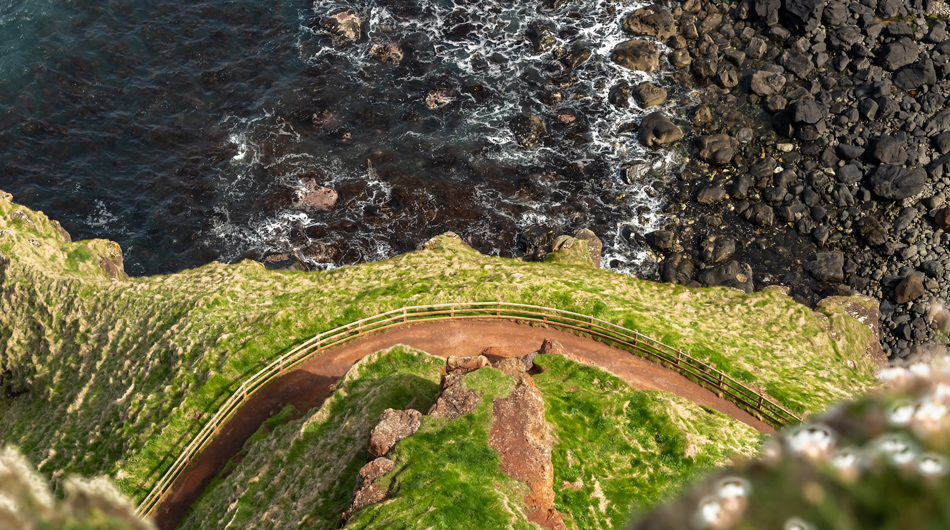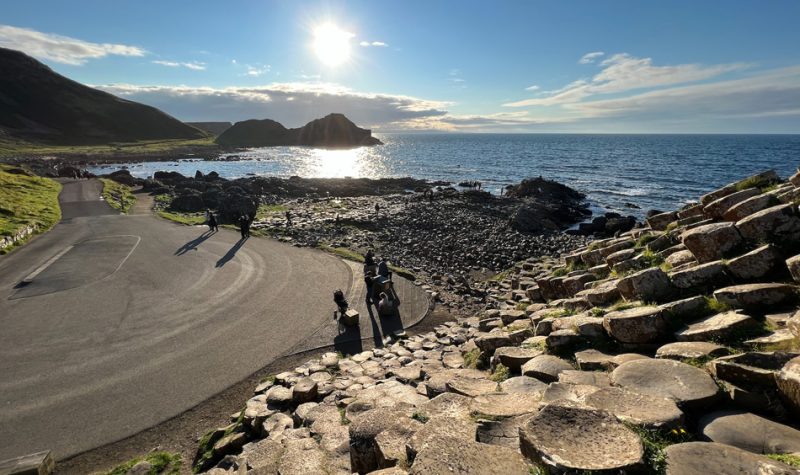The Giant’s Causeway is an incredible place of attraction in Ireland that stirs the interest and imagination of believers in science and mythology alike.
Described as a World Heritage Site by UNESCO (United Nations Educational, Scientific, and Cultural Organization) in 1986, millions of tourists flock to this place every year to discover what caused the honeycomb patterns of some 40,000 basalt columns and slabs that jut out of the cliff faces. It is a geological wonder in per se.
Everything you Need to Know

Located in County Antrim in northern Ireland, the Giant’s Causeway is about three miles northeast of the town of Bushmills. It is estimated that active volcanoes surrounded the place about 50 to 60 million years ago; molten lava erupted from the craters of these volcanoes and slid down towards the sea below. The lava cooled down on coming in contact with the cool waters of the sea, shrank and fractured, and resulted in the Causeway. The basalt slabs are polygonal shaped. Mother Nature has her peculiar ways to bestow beauty upon us. These naturally sculpted basalt columns are an amazing piece of beauty to look at; they are a rarity.
But many wonder as to why the Giant’s Causeway should be called so? According to the popular legend, many centuries ago the place was inhabited by two enormous giants who lived on either side of the sea and were constantly at war with each other. They lost no opportunity to incite one another, and indulge in mighty shows of strength.
One of them was called Finn MacCool who lived happily on the North Antrim coast with his wife. But he also despised the presence of his Scottish rival who lived on the other side of the sea, and was called the Red Man. The latter often subjected them to blows of insults.
The two monsters hurled rocks to express the strong aversion and intense dislike they had for each other. One day they challenged themselves to a physical duel and started tossing boulders into the sea to create the impression of a bridge. In the end, the Red Man accepted his defeat, bowed to the gigantic Finn’s superiority, and turned on his heels to escape back to Scotland. Under the impact of his large feet, the boulders broke into pieces and damaged the causeway. What remains today are two identical rock formations — one on the north Antrim coast of Ireland, and the other one at Fingal’s Cave in Scotland, right across the sea.
At Giant’s Causeway, you can run your own imagination, put the figments into place, and weave your own story around it — irrespective of the scientific explanation to the causation of the rocks or the legendary tales surrounding this mystical place.
Tourists love the isolation and stunning, scenic views around the Causeway. It lends a sense of calm and tranquility just sitting on one of those large-sized pillared rocks, watching the sea in action.
The Giant’s Causeway and its coastal environs were handed over to the National Trust in 1961. The Trust promotes the preservation of natural and architectural wonders.
The green grasslands, the seashores, the cliffs, and the marshes of Giant’s Causeway are also home to a variety of species of birds (like stonechats, gannets, fulmars, and falcons) and flora. An amazing way to discover the place would be to hike to it along the Causeway Coast. Along the coastline you will find crumbling castles, quaint harbors, postcard beaches, and nesting seabirds.
The place offers an excellent venue for the shutterbugs. You will have immense opportunities to go click-click on this beautiful plateau land. Early morning and late afternoon are the best times to shoot some memorable pictures.
Info on Timings and Tickets
There is no fee to access the Giant’s Causeway but you will have to pay to avail of the facilities that are there on the site, like the car park or the Visitor’s Centre which also has a shop, cafe, and restroom inside it.
Keep at least 3 hours in hand to fully explore the place. You will require good stamina and physical fitness to climb up the steep and rocky columns, and down back again.
The best time to visit the place will be at sunrise, watching the world come to life and connecting with it with a feeling of ownership. If you are not a crowd person, early morning hours will be the best time for you to head there. The place gets crowded as the day lengthens. Late evening hours to watch the sundown is just as amazing. But this is only for those who are not keen to explore hiking thrills.
Address & Contact Information

The Giant’s Causeway is located at 44 Causeway Road, Bushmills, County Antrim, BT57 8SU. The tourist attraction can be reached by taking a combination journey of both train and bus. It is about 160 miles (a three-hour journey) from the city of Dublin, and a 60 mile trip from Belfast that takes around 90 minutes. If you’d rather drive, you can park your car at the Visitor’s Centre.
For queries or help, you can contact the National Trust at +44 28 2073 1855 or giantscauseway@nationaltrust.org.uk.

